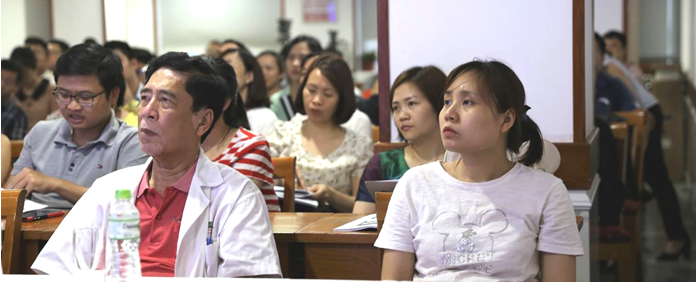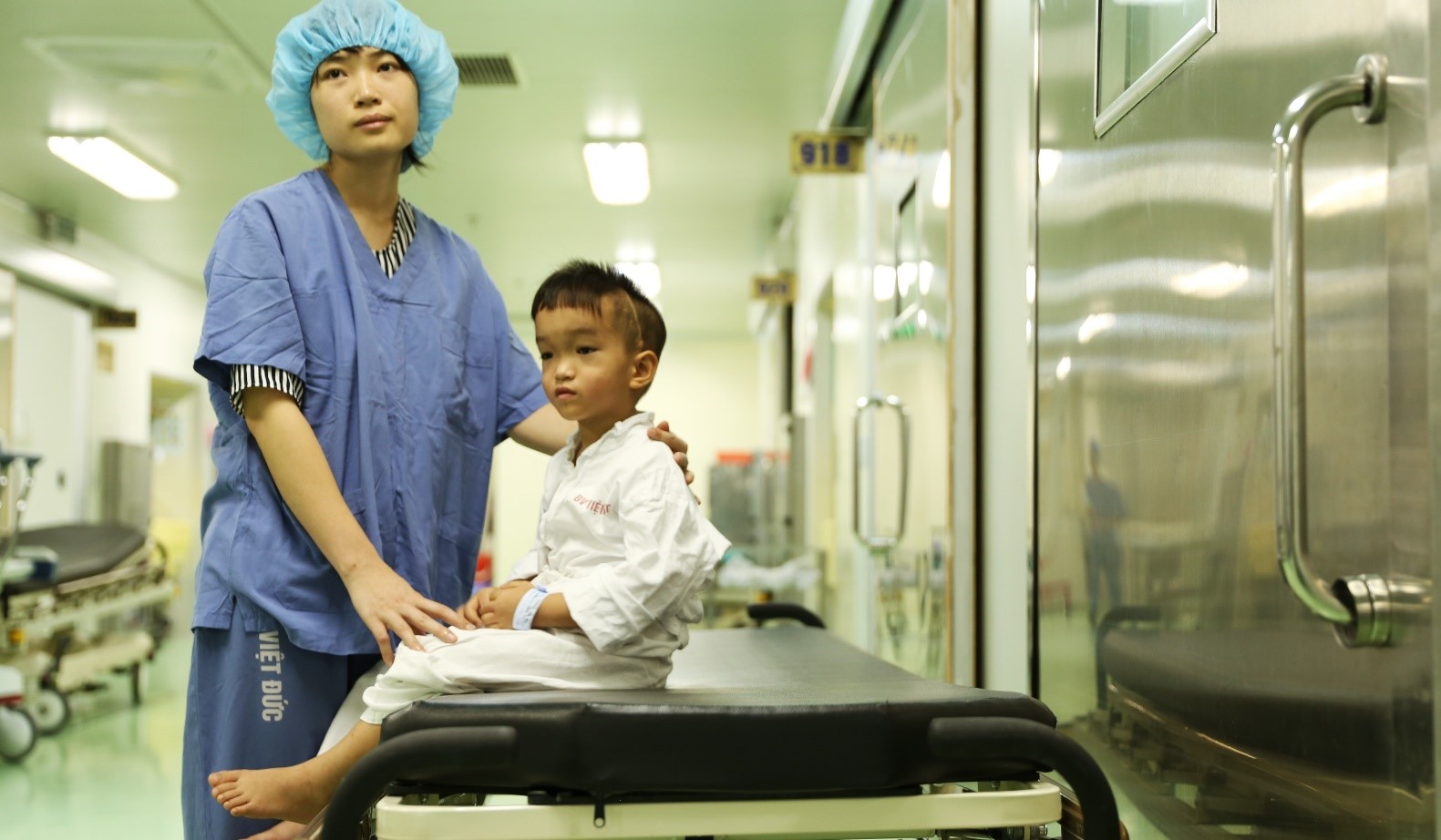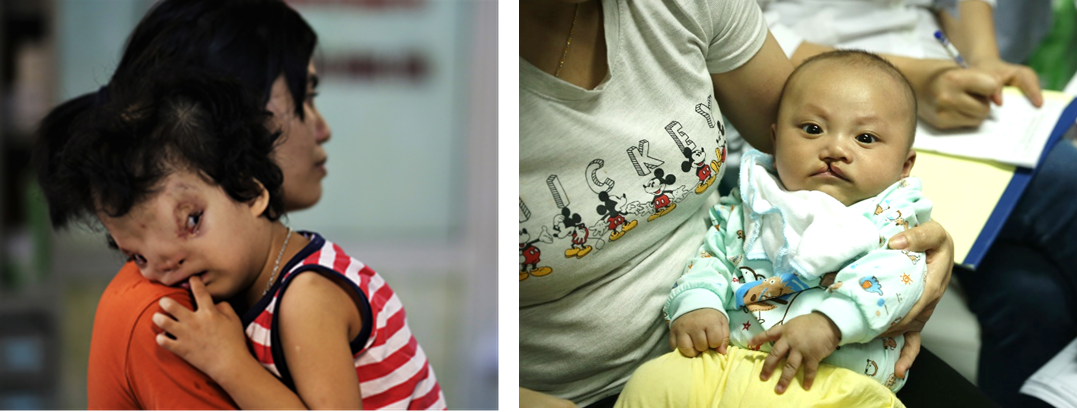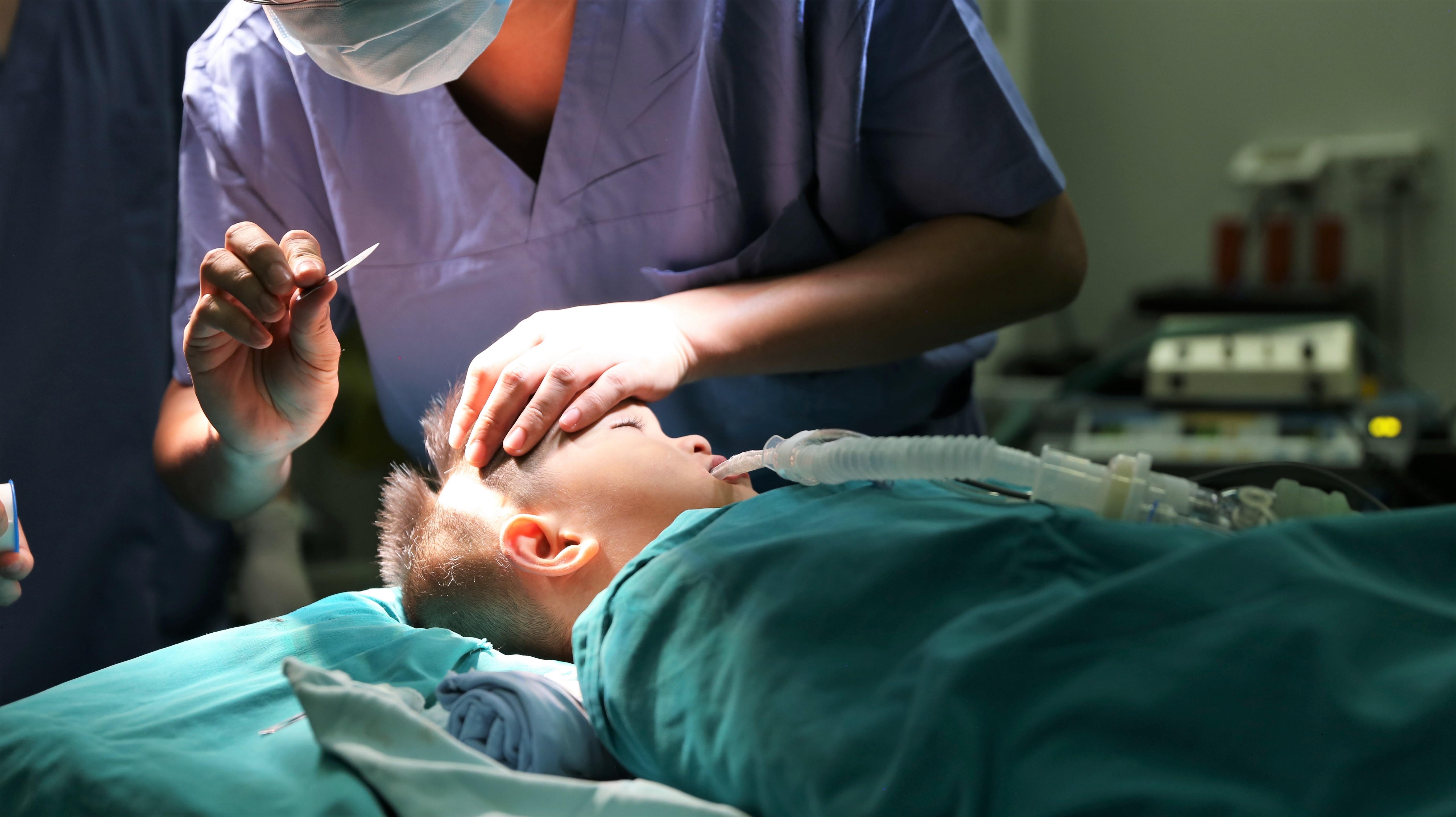Hanoi Mission, May 2019
126 patients were assessed by the multidisciplinary team of consultant medics from Facing the World and from partner hospitals in Vietnam.
16 medics from the UK took part, representing the following specialities: Craniofacial Surgery, Neurosurgery, ENT Surgery, Maxillofacial Surgery, Oculoplastic Surgery, Anaesthesia and Theatre Nursing.
Treatment plans were put in place in collaboration with the local Vietnamese surgeons, and it was decided to operate on 56 patients jointly during the week. The teams operated at two hospitals: Viet-Duc University Hospital and Hong Ngoc General Hospital.
The collaborative approach of the missions is designed to complement the extensive international Fellowship programs run by the charity in the UK, Canada and now the USA so that true craniofacial services can be established in Vietnam.


The majority of operations were performed on children. Some required complex surgery to reconstruct the entire bony anatomy of their face and skull, necessitating input from several different specialities at the same time. Two children had a condition called Apert’s syndrome, where some of the bones in the skull fuse prematurely. They needed surgery to expand the skull and allow proper development of the brain. This involved accessing the upper part of the skull using a bicoronal incision (ear to ear across the top of the head) and lowering all the soft tissue down to the level of the nose and to the back of the head. Since the skull had to be opened for direct access to the brain, combined input from craniofacial surgeons and neurosurgeons was required. They removed strips of bone to create artificial openings in the skull to allow it to expand normally as the babies grow. This is essential to prevent any further developmental problems with these children as they grow up.
Numerous complex resections of tumours were successfully undertaken. These included cancers of the parotid gland (salivary gland), through which the main nerves supplying the facial muscles travel. Any slight errors here result in a weakening of the muscles which may cause eating and drinking problems, issues with eyes, and aesthetic concerns.


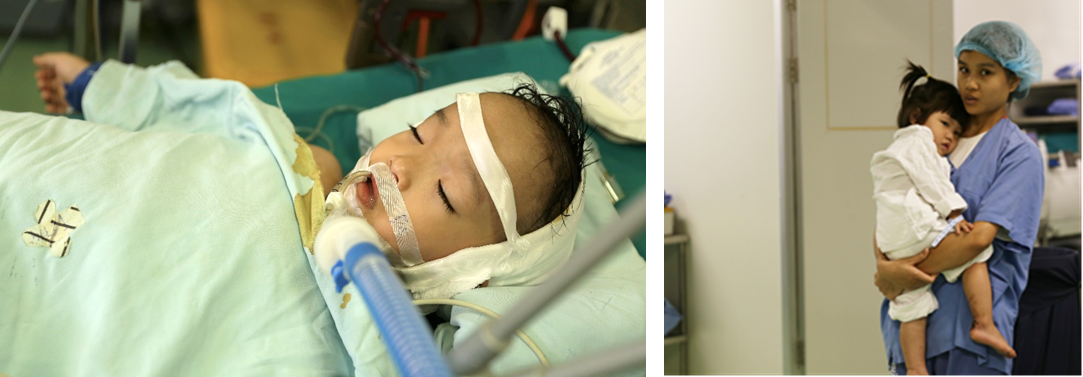
Other shorter procedures were carried out, all equally complicated if less time-consuming, and all life-changing in terms of the final outward appearance. For example, the surgeons undertook nose reconstructions with forehead flaps, in which part of the forehead was used to rectify a defect of the nose. This is a multiple-step procedure, to be completed by the local team at a later stage. One case was a complex revision which they will have to manage going forward, for which plans were put in place. This presented a great example of a complex version of a normally routine operation, something they learned a lot from.
Some of the nose reconstructions also involved taking cartilage from other areas of the body such as the ear. The cartilage was sculpted to the right shape and inserted into the nose in order to make the new side match the other.
Droopy eyelids, known as ptosis, can cause irreversible vision loss in babies if their eyes are not exposed to light for a prolonged period. The brain does not develop normally, and early surgery is essential to preserve vision. Different procedures to help suspend eyelids were performed by our oculoplastic surgeons who operated on many children during the week. We have performed these procedures during previous missions so the local teams are now more and more hands on, and showing a real progression in their knowledge and skills.
This year, emphasis was placed by the Vietnamese team on further developing the in-house speciality of oculoplastics. Traditionally in the state system this is a speciality of the Eye Hospital, but the need has been identified to have it available within the department. During this mission several patients were seen who had been suffering with damaged tear ducts and eyelids following significant facial trauma. All had their eyelids repaired and permanent stents placed in their tear ducts to help drainage.


The following conditions were treated during the week:
Congenital abnormalities including:
- Apert syndrome (craniosynostosis, palatal deformities)
- Congenital ptosis
- Neurofibromatosis
- Haemangiomas
Acquired diseases such as:
- Parotid tumours
- Nerve tumours
- Traumatic injuries to the face
- Contracted burns scars
The operations performed to try and improve these problems included:
- Excision of parotid tumours
- Cranial vault remodelling for craniosynostosis
- Ptosis cases with tear duct repairs
- Upper eyelid reconstructions with local flaps
- Scar releases with skin grafts and Z-plasty repairs
- Nasal reconstruction with forehead flaps and ear cartilage grafts
- Orbital reconstructions
- Cranial vault reconstructions
- Palate and cleft repairs
- Excision of neurofibromatosis tumours
- Excision of arteriovenous malformations
- Maxillofacial operations involving palatal distraction with bone grafts
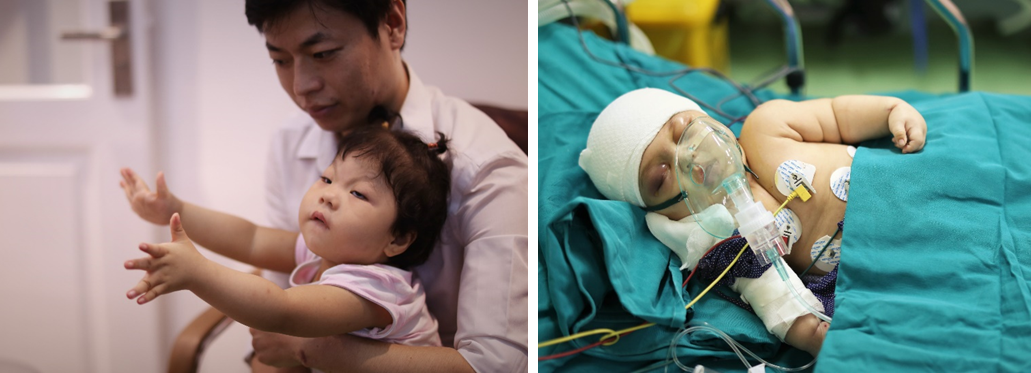

To complement the surgical training, the charity gave daily lectures which were open to the charity’s full network. Over 100 doctors from all over Vietnam attended the week’s lecture series.
The lectures were hosted by Hong Ngoc General Hospital and included the following topics:
- A Practical Diagnosis of Orbital Conditions
- Top Tips for Eyelid Reconstruction
- The Management of Orbital Fractures
- Nasal Reconstruction: repairing the deformed nose
- The Diagnosis and Management of Non-syndromic and Syndromic Craniosynostosis (Including Apert’s and Crouzon’s syndromes)
The charity is currently planning future missions.
